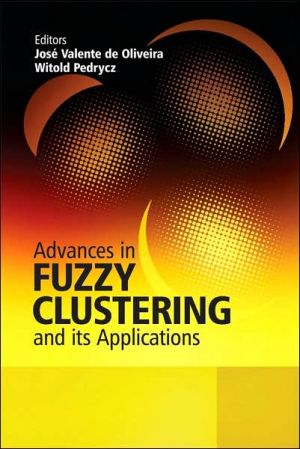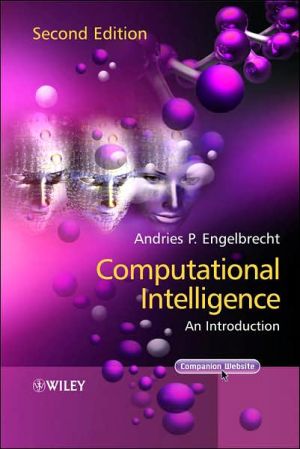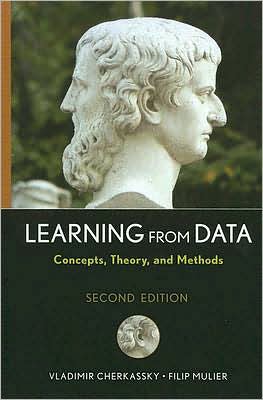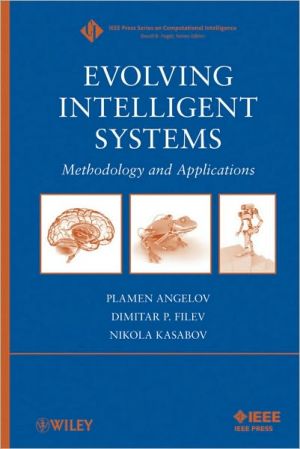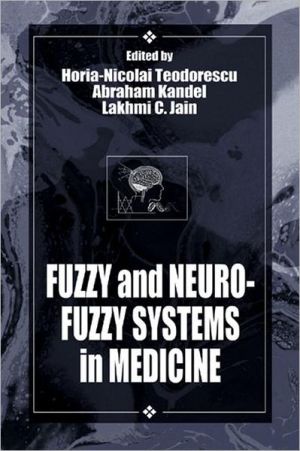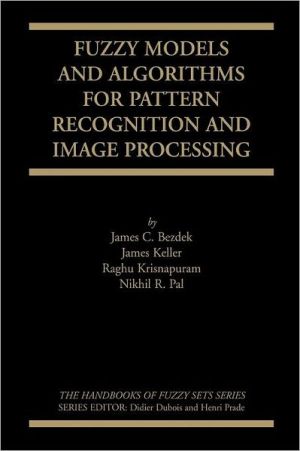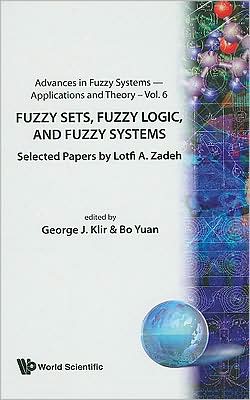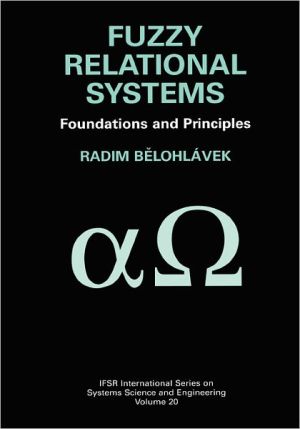Advances in Fuzzy Clustering and its Applications
A comprehensive, coherent, and in depth presentation of the state of the art in fuzzy clustering.\ Fuzzy clustering is now a mature and vibrant area of research with highly innovative advanced applications. Encapsulating this through presenting a careful selection of research contributions, this book addresses timely and relevant concepts and methods, whilst identifying major challenges and recent developments in the area. Split into five clear sections, Fundamentals, Visualization,...
Search in google:
A comprehensive, coherent, and in depth presentation of the state of the art in fuzzy clustering. Fuzzy clustering is now a mature and vibrant area of research with highly innovative advanced applications. Encapsulating this through presenting a careful selection of research contributions, this book addresses timely and relevant concepts and methods, whilst identifying major challenges and recent developments in the area. Split into five clear sections, Fundamentals, Visualization, Algorithms and Computational Aspects, Real-Time and Dynamic Clustering, and Applications and Case Studies, the book covers a wealth of novel, original and fully updated material, and in particular offers: a focus on the algorithmic and computational augmentations of fuzzy clustering and its effectiveness in handling high dimensional problems, distributed problem solving and uncertainty management. presentations of the important and relevant phases of cluster design, including the role of information granules, fuzzy sets in the realization of human-centricity facet of data analysis, as well as system modelling demonstrations of how the results facilitate further detailed development of models, and enhance interpretation aspects a carefully organized illustrative series of applications and case studies in which fuzzy clustering plays a pivotal role This book will be of key interest to engineers associated with fuzzy control, bioinformatics, data mining, image processing, and pattern recognition, while computer engineers, students and researchers, in most engineering disciplines, will find this an invaluable resource and research tool.
List of Contributors. Foreword. Preface. Part I Fundamentals. 1 Fundamentals of Fuzzy Clustering (Rudolf Kruse, Christian Döring and Marie-Jeanne Lesot). 1.1 Introduction. 1.2 Basic Clustering Algorithms. 1.3 Distance Function Variants. 1.4 Objective Function Variants. 1.5 Update Equation Variants: Alternating Cluster Estimation. 1.6 Concluding Remarks. Acknowledgements. References. 2 Relational Fuzzy Clustering (Thomas A. Runkler). 2.1 Introduction. 2.2 Object and Relational Data. 2.3 Object Data Clustering Models. 2.4 Relational Clustering. 2.5 Relational Clustering with Non-spherical Prototypes. 2.6 Relational Data Interpreted as Object Data. 2.7 Summary. 2.8 Experiments. 2.9 Conclusions. References. 3 Fuzzy Clustering with Minkowski Distance Functions (Patrick J.F. Groenen, Uzay Kaymak and Joost van Rosmalen). 3.1 Introduction. 3.2 Formalization. 3.3 The Majorizing Algorithm for Fuzzy C-means with Minkowski Distances. 3.4 The Effects of the Robustness Parameter. 3.5 Internet Attitudes. 3.6 Conclusions. References. 4 Soft Cluster Ensembles (Kunal Punera and Joydeep Ghosh). 4.1 Introduction. 4.2 Cluster Ensembles. 4.3 Soft Cluster Ensembles. 4.4 Experimental Setup. 4.5 Soft vs. Hard Cluster Ensembles. 4.6 Conclusions and Future Work. Acknowledgements. References. Part II Visualization. 5 Aggregation and Visualization of Fuzzy Clusters Based on Fuzzy Similarity Measures (János Abonyi and Balázs Feil). 5.1 Problem Definition. 5.2 Classical Methods for Cluster Validity and Merging. 5.3 Similarity of Fuzzy Clusters. 5.4 Visualization of Clustering Results. 5.5 Conclusions. Appendix 5A.1 Validity Indices. Appendix 5A.2 The Modified Sammon Mapping Algorithm. Acknowledgements. References. 6 Interactive Exploration of Fuzzy Clusters (Bernd Wiswedel, David E. Patterson and Michael R. Berthold). 6.1 Introduction. 6.2 Neighborgram Clustering. 6.3 Interactive Exploration. 6.4 Parallel Universes. 6.5 Discussion. References. Part III Algorithms and Computational Aspects. 7 Fuzzy Clustering with Participatory Learning and Applications (Leila Roling Scariot da Silva, Fernando Gomide and Ronald Yager). 7.1 Introduction. 7.2 Participatory Learning. 7.3 Participatory Learning in Fuzzy Clustering. 7.4 Experimental Results. 7.5 Applications. 7.6 Conclusions. Acknowledgements. References. 8 Fuzzy Clustering of Fuzzy Data (Pierpaolo D’Urso). 8.1 Introduction. 8.2 Informational Paradigm, Fuzziness and Complexity in Clustering Processes. 8.3 Fuzzy Data. 8.4 Fuzzy Clustering of Fuzzy Data. 8.5 An Extension: Fuzzy Clustering Models for Fuzzy Data Time Arrays. 8.6 Applicative Examples. 8.7 Concluding Remarks and Future Perspectives. References. 9 Inclusion-based Fuzzy Clustering (Samia Nefti-Meziani and Mourad Oussalah). 9.1 Introduction. 9.2 Background: Fuzzy Clustering. 9.3 Construction of an Inclusion Index. 9.4 Inclusion-based Fuzzy Clustering. 9.5 Numerical Examples and Illustrations. 9.6 Conclusions. Acknowledgements. Appendix 9A.1. References. 10 Mining Diagnostic Rules Using Fuzzy Clustering (Giovanna Castellano, Anna M. Fanelli and Corrado Mencar). 10.1 Introduction. 10.2 Fuzzy Medical Diagnosis. 10.3 Interpretability in Fuzzy Medical Diagnosis. 10.4 A Framework for Mining Interpretable Diagnostic Rules. 10.5 An Illustrative Example. 10.6 Concluding Remarks. References. 11 Fuzzy Regression Clustering (Mikal Sato-Ilic). 11.1 Introduction. 11.2 Statistical Weighted Regression Models. 11.3 Fuzzy Regression Clustering Models. 11.4 Analyses of Residuals on Fuzzy Regression Clustering Models. 11.5 Numerical Examples. 11.6 Conclusion. References. 12 Implementing Hierarchical Fuzzy Clustering in Fuzzy Modeling Using the Weighted Fuzzy C-means (George E. Tsekouras). 12.1 Introduction. 12.2 Takagi and Sugeno’s Fuzzy Model. 12.3 Hierarchical Clustering-based Fuzzy Modeling. 12.4 Simulation Studies. 12.5 Conclusions. References. 13 Fuzzy Clustering Based on Dissimilarity Relations Extracted from Data (Mario G.C.A. Cimino, Beatrice Lazzerini and Francesco Marcelloni). 13.1 Introduction. 13.2 Dissimilarity Modeling. 13.3 Relational Clustering. 13.4 Experimental Results. 13.5 Conclusions. References. 14 Simultaneous Clustering and Feature Discrimination with Applications (Hichem Frigui). 14.1 Introduction. 14.2 Background. 14.3 Simultaneous Clustering and Attribute Discrimination (SCAD). 14.4 Clustering and Subset Feature Weighting. 14.5 Case of Unknown Number of Clusters. 14.6 Application 1: Color Image Segmentation. 14.7 Application 2: Text Document Categorization and Annotation. 14.8 Application 3: Building a Multi-modal Thesaurus from Annotated Images. 14.9 Conclusions. Appendix 14A.1. Acknowledgements. References. Part IV Real-time and Dynamic Clustering. 15 Fuzzy Clustering in Dynamic Data Mining – Techniques and Applications (Richard Weber). 15.1 Introduction. 15.2 Review of Literature Related to Dynamic Clustering. 15.3 Recent Approaches for Dynamic Fuzzy Clustering. 15.4 Applications. 15.5 Future Perspectives and Conclusions. Acknowledgement. References. 16 Fuzzy Clustering of Parallel Data Streams (Jürgen Beringer and Eyke Hüllermeier). 16.1 Introduction. 16.2 Background. 16.3 Preprocessing and Maintaining Data Streams. 16.4 Fuzzy Clustering of Data Streams. 16.5 Quality Measures. 16.6 Experimental Validation. 16.7 Conclusions. References. 17 Algorithms for Real-time Clustering and Generation of Rules from Data (Dimitar Filev and Plamer Angelov). 17.1 Introduction. 17.2 Density-based Real-time Clustering. 17.3 FSPC: Real-time Learning of Simplified Mamdani Models. 17.4 Applications. 17.5 Conclusion. References. Part V Applications and Case Studies. 18 Robust Exploratory Analysis of Magnetic Resonance Images using FCM with Feature Partitions (Mark D. Alexiuk and Nick J. Pizzi). 18.1 Introduction. 18.2 FCM with Feature Partitions. 18.3 Magnetic Resonance Imaging. 18.4 FMRI Analysis with FCMP. 18.5 Data-sets. 18.6 Results and Discussion. 18.7 Conclusion. Acknowledgements. References. 19 Concept Induction via Fuzzy C-means Clustering in a High-dimensional Semantic Space (Dawei Song, Guihong Cao, Peter Bruza and Raymond Lau). 19.1 Introduction. 19.2 Constructing a High-dimensional Semantic Space via Hyperspace Analogue to Language. 19.3 Fuzzy C-means Clustering. 19.4 Word Clustering on a HAL Space – A Case Study. 19.5 Conclusions and Future Work. Acknowledgement. References. 20 Novel Developments in Fuzzy Clustering for the Classification of Cancerous Cells using FTIR Spectroscopy (Xiao-Ying Wang, Jonathan M. Garibaldi, Benjamin Bird and Mike W. George). 20.1 Introduction. 20.2 Clustering Techniques. 20.3 Cluster Validity. 20.4 Simulated Annealing Fuzzy Clustering Algorithm. 20.5 Automatic Cluster Merging Method. 20.6 Conclusion. Acknowledgements. References. Index.
\ From the PublisherResearchers, as well as those with incipient interest in the field, will find this book very useful and informative. (Computing Reviews, July 8, 2008)\ \ \
